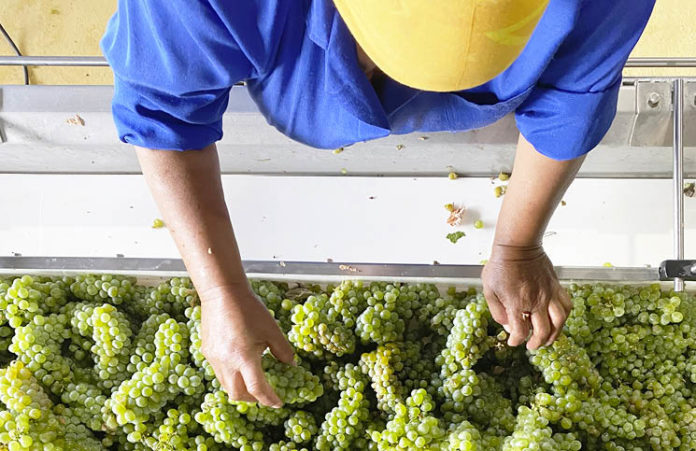
Another year, another vintage. Yet, many don’t realise that it’s the current vintage that will most probably only come to life in the year to follow, or the next, or even the year after that. Wine is the perfect social lubricant, right? Why wreck your brain about what fruit was used or what processes followed to ensure the fruit stays healthy and be transformed into the best wine possible?
When the sun beats down and many of us are blessed to be dowsed in the comfort of air-conditioned rooms, lazing by a pool (with a glass of wine of course) or packing the fridge for the weekend celebrations, the clock doesn’t stop in the vineyards and the cellar.
 There are people unfalteringly picking the grapes, loading them, sorting them and processing them. This process repeats itself at hours determined by the whims of nature. Back at the cellar, another team is receiving the grapes, diligently sorting them to remove MOG (matters other than grapes) and to ensure the best and healthiest bunches tumbles down the funnel into the press. Here too they work like a well-oiled machine, swiftly moving like one big centipede to ensure steady work flow.
There are people unfalteringly picking the grapes, loading them, sorting them and processing them. This process repeats itself at hours determined by the whims of nature. Back at the cellar, another team is receiving the grapes, diligently sorting them to remove MOG (matters other than grapes) and to ensure the best and healthiest bunches tumbles down the funnel into the press. Here too they work like a well-oiled machine, swiftly moving like one big centipede to ensure steady work flow.
But when is harvest supposed to start? Veraison is the French term used to describe the onset of ripening or when the grapes start to change colour in January and February. This is when the vineyard team need to judge the perfect time to harvest certain cultivars.
With what seems to be a particularly hot and dry summer, the vines will against all odds continue to use all its energy to ripen its grapes. The viticulturist needs to be sensitive to its water needs and the vineyard team needs to keep a close eye on the sugar accumulation, something that can change in a blink of an eye.
So yes, no rest for the vineyard and cellar team for the better part of summer, pacing the rows to measure ripeness. It is crucial to pick the grapes with the ideal amount of malic acid intact that will contribute to the wine’s longevity and freshness. The balancing act of sweetness, acidity and phenolic ripeness is what sets the stage for the quality of wine to be made in the cellar.

